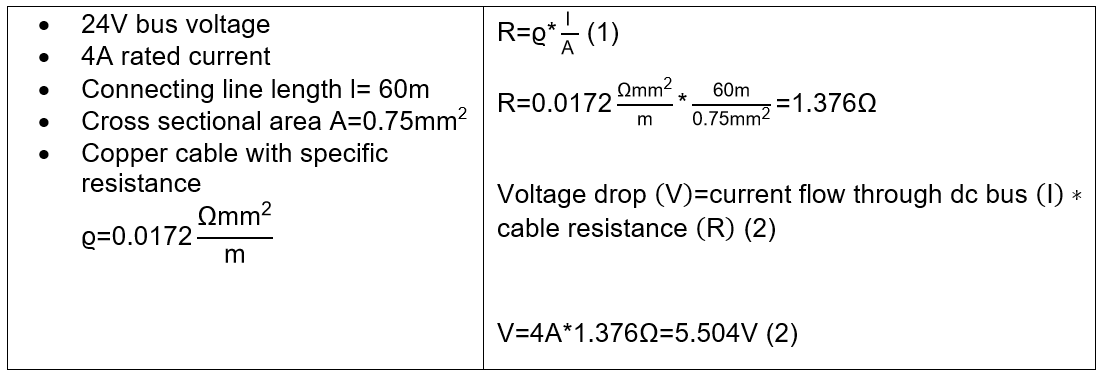Isolated MagI³C Power Module Mastering the 24V Industry Bus
Minimum Input Voltage – Lower Limit
Author: Timur Uludag / Editor: Gerhard Stelzer
In the industrial environment, 24 V bus systems are widely used to supply a wide range of field devices. The article series explained selection criteria for power modules, typical voltage ranges and the issues with input voltage limits. Part 3 now discusses the lower limit of the minimum input voltage.
Usually the cable cross-sections for the DC bus is selected based on experience, rough estimation or with the use of tables. It should be noted that the commonly used design constraints for cable sizing are to avoid overheating .This means the voltage drop of the connecting line is mostly being overlooked and therefore not considered. This voltage drop in turn means a difference in the voltage levels between output of the electrical supply (Vout) and the input of the application (+VIN).
For a better clarification a numerical example calculation is shown with real values that could be found in an industrial plant:

Based on the cable cross sectional area A, cable length l, and the specific resistance ρ, the electrical resistance R can be calculated as 1.376Ω using equation (1). If we consider a 100W supply, a rated current of 4A flows through the 24V DC bus. Based on equation (2) we will get a voltage drop across the connecting lines. That means, at the supply input of the application, e.g. PLC, the nominal 24V cannot be provided as it is only 24V-5.5V=18.5V. If we take a closer look at the PLC standard IEC 61131-2, the input voltage range for the supply voltage is defined to 19.2V to 30V. With a supply voltage of 18.5V, the undervoltage shut down of the PLC will be tripped and it will stop its operation.
The lower operating voltage limit of 8V of the SIP-8 enables a placement in an application far away from the supply cabinet. In addition, an undervoltage detection circuit can be installed to protect against an input voltage drop below 9V, in a typical 9V application.
This article series is being continued with “Maximum input voltage – upper limit”.

